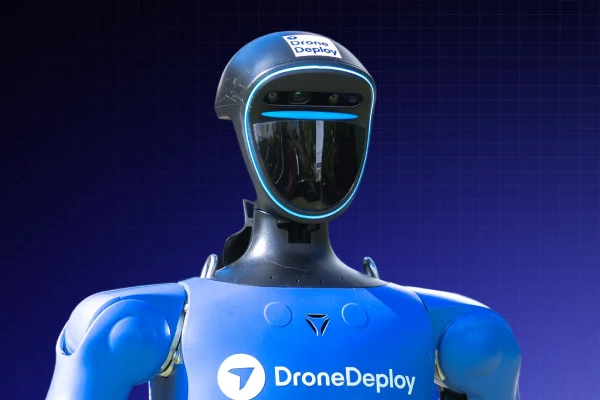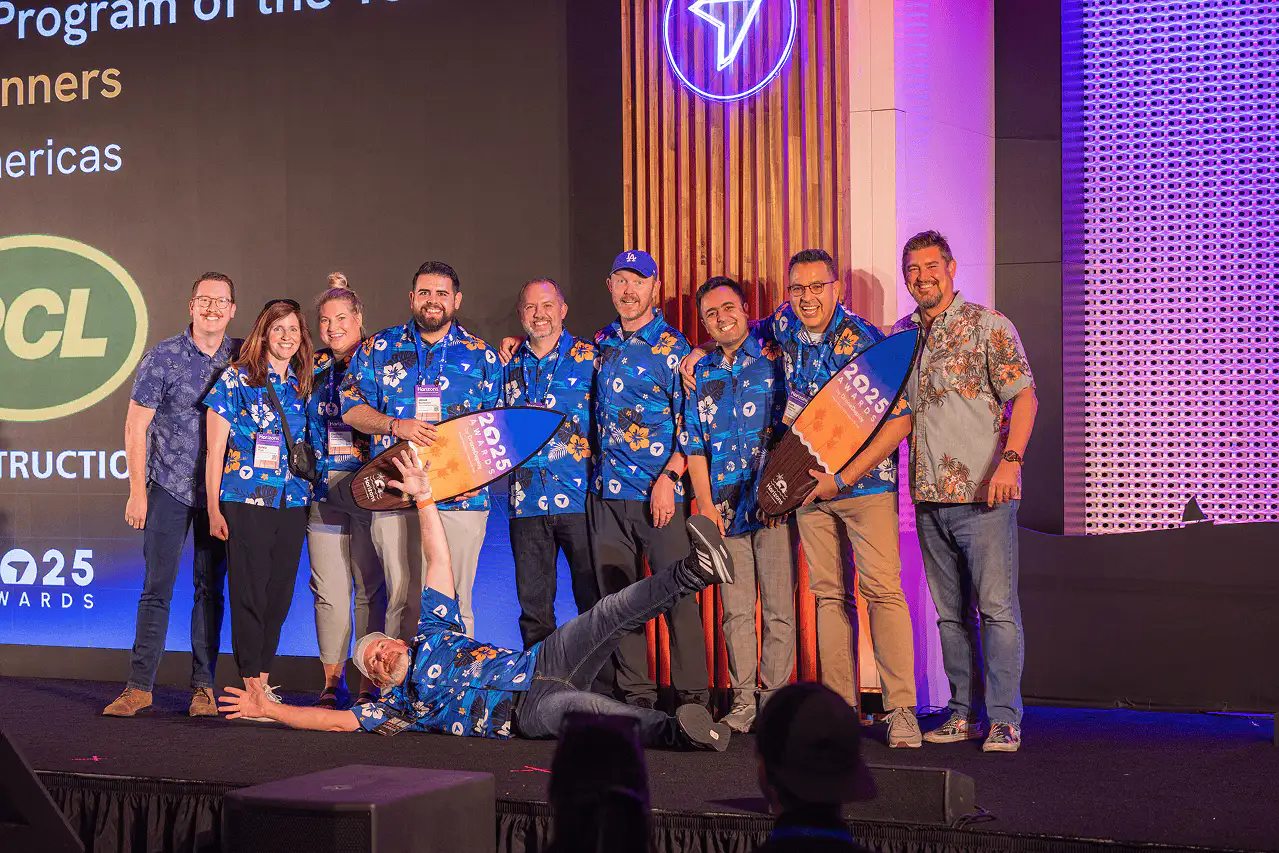Safety, smarter: A.I. and your work site.

Quick Summary
DroneDeploy’s Safety AI brings automated, OSHA-aligned risk detection to jobsite walkthroughs using AI trained on real construction environments. It scans every image frame to spot hazards, generate detailed reports and eliminate blind spots that human walkthroughs might miss – no extra setup or training needed. Safety AI enhances compliance, lowers EMR, improves team safety culture and reduces time spent documenting. With human-level reasoning and real-time alerts, it flags issues early so teams can act before accidents happen. Available now with DroneDeploy Ground. Book a demo to learn more.
For anyone responsible for a work site, safety is one of your highest priorities. If you could reduce the risks and hazards to your people, but only on the condition that you’d have to wear a bowtie to work, you’d no doubt drive to your nearest haberdasher.
With the recent advances in artificial intelligence, it’s now possible to have that kind of peace of mind, without cosplaying as a professor. That’s because AI is purpose-built for jobsite safety – with it, you can better protect your workers, fortify your compliance, lower your EMR, and build out a culture of safety across your organization.
Exponential visibility
In combining machine learning, photogrammetry, and the latest in large language modeling, AI adds an incredible amount of visibility to your walkthroughs. Its ability to slice footage into thousands of individual images means you can now view every nook and cranny of your entire site – all without changing a thing about your walkthrough process.
And AI not only optimizes your visibility into safety risks, it can also automatically generate actionable reports when a risk is flagged during a walkthrough.

A single source of credibility
A core part of your team’s daily routine is walking the site looking for risks. But the thoroughness of these walkthroughs depends on the experience and skill set of the person performing it. Which means if you have team members rotating responsibilities (and who doesn't), your walkthroughs can have visibility gaps that can lead to dangerous blind spots.
Or, worse, after flagging a risk on a walkthrough, a junior team member attempts to fix the issue by rigging a makeshift — and noncompliant — correction on the spot, providing a false sense of protection to your team.
Artificial intelligence establishes a high standard of safety across your team, bringing both clarity and expertise in ways that help your most junior project team members level up to a safety veteran. Its superhuman review capabilities examine every single angle across hours of footage, catching issues less experienced team members wouldn’t.
And instead of relying on — and waiting for — a select few people in your organization to interpret walkthrough footage against all of OSHA’s ins and outs, you can set AI’s object detection and real-time alerts capabilities against OSHA regulations, so that every team member walking the site is now a safety watchdog.
Proactive protection
Due to the unpredictable nature of construction, teams are often forced to take a reactive safety posture. But with AI’s enterprise analytics capabilities, you can flag dangerous situations in advance so safety personnel and site superintendents can take action in advance of a dangerous situation – and not in the aftermath of it. For instance, take ladders: choosing the right one for the right application is critical toward keeping your people safe.
AI is able to recognize ladder variables – everything from type, duty rating, maximum height, distance between rungs, and number of rungs – so that your people always use the proper equipment when they are at their most vulnerable.
Uplevelling workstreams
Safety walkthroughs are more than just walking through your jobsite holding a camera. It’s uploading footage, documenting issues, then figuring out the right solve for each issue. In taking on the mundane and monotonous parts of safety walkthroughs, AI gives your team the time they need to focus on higher-level tasks.
Instead of your team taking an afternoon to break down footage and document risks, AI organizes all aspects of your walkthrough so that your team gets out in front of their work – instead of falling behind in paperwork. In fact, it’s estimated that an hour of AI-reviewed footage captured by a project engineer or intern is the equivalent of five hours of close inspection by an experienced Safety Manager.

Human-level reasoning
Initially, AI relied on machine learning; that is, the more data AI was given, the better it became in finding patterns and deviations within that data. From a construction safety perspective, this mostly led to improved object detection (e.g. flagging workers not wearing a hard hat). But the big leap in the past two years has been AI’s ability to develop logical reasoning.
Because artificial intelligence can now implement abstract thinking, it’s able to apply human-level common sense to more nuanced tasks. Armed with logical reasoning, AI can now go one level deeper in your inspections to make judgment calls on your job site – things like determining the severity of a risk, as opposed to merely flagging the risk itself. Because of this, AI has transcended from a tool to be used, to a collaborator that can be trusted to perform a series of tasks without constant oversight.
AI’s ROI
While there’s no price that should be put on a human life, there is a cost to safety that goes beyond the human. Experience Modification Rating (EMR) is a rating assigned to each contractor that describes their risk history.
Similar to a safety credit score, this number not only informs insurance premiums, it can limit your ability to offer a competitive bid as many companies will not accept bids from subcontractors with an EMR above 1. Implementing AI into your safety posture is a key step toward lowering your EMR to ultimately improve your margins – as well as team morale.
Here at DroneDeploy, we’ve been on a mission to figure out how to utilize artificial intelligence in ways that improve your efficiency, safety and profitability. It’s why we’re so excited to introduce Safety AI, the only solution of its kind that automatically identifies safety risks on construction sites.
Combining proprietary AI with large multimodal models from Google and OpenAI, Safety AI seamlessly integrates into all DroneDeploy Ground projects with no additional setup or training. Simply turn it on, capture your site as you normally would, and breathe easier knowing you’re doing what you need to do to keep your people safe.
Safety AI is available now and requires a new or existing subscription to DroneDeploy Ground. Book a demo with our team to learn more.
FAQ
Related articles
Ready to manage your data from the very start?
Book a quick call to see how DroneDeploy streamlines capture from construction through building ROI.
.svg)
.png)


